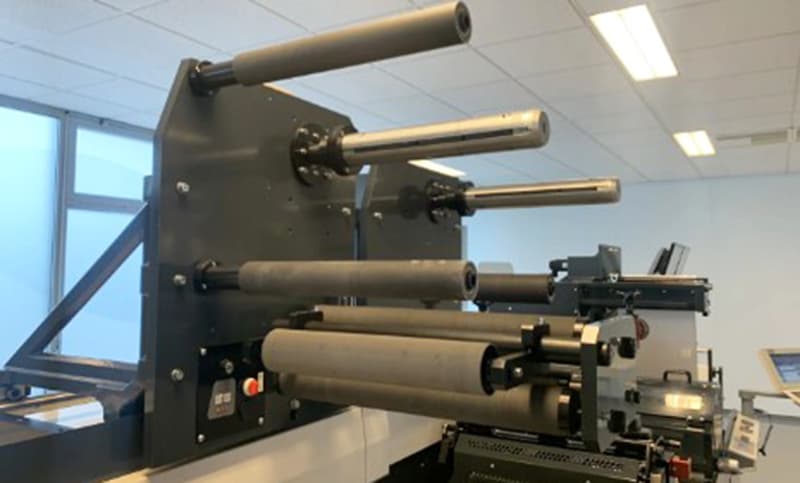Understanding the Variety of Lamination Techniques in the Label and Packaging Industry
Film lamination involves applying a clear film to a printed substrate using either a dry or wet adhesive. This process not only enhances the visual appeal of the printed image but also provides essential surface protection during transportation and handling. Additionally, lamination offers moisture resistance, which is particularly beneficial for products like personal care items and ‘under the sink’ goods.
Lamination films come in different thicknesses and clarities, including acetate, polyester, and polypropylene, available in both matt and gloss finishes. These films are measured in microns, with thicker films offering more durability.
Types of Lamination Films and Their Applications
- Polypropylene and Polyester Laminates: These are commonly used in combination with adhesive, heat, and pressure. Ensuring smooth and crease-free application requires careful handling and precise tension control.
- Overprintable and Non-Printable Finishes: Laminates can be supplied with finishes suitable for overprinting or as non-printable surfaces. Multi-layer labels, coupon labels, and booklet labels benefit from lamination for enhancement, protection, hinging, and resealing purposes.
Common Lamination Techniques in the Industry
- Solventless Lamination: Uses adhesives that dry by chemical reaction, eliminating the need for a drying system. Widely used in flexible packaging.
- Wax Lamination: Involves applying a wax or hot melt adhesive in a liquid state before bringing the substrates together. Commonly used in food packaging.
- Dry Lamination: An adhesive is applied to the laminate film, remaining tacky before application to the printed web. This method is prevalent in self-adhesive label lamination.
- Wet Lamination: The adhesive is in a liquid state when the laminate and base substrates are brought together. Used in both flexible packaging and self-adhesive labeling.
Focus on Self-Adhesive Label Industry: Dry and Wet Lamination
Dry Lamination
Dry lamination is preferred for short-run applications, using heavier and thicker pre-coated films. However, the noise generated from the tacky adhesive can be a health and safety concern. Water-based acrylic adhesives are commonly used, with a trend towards 100% solids adhesives for environmental and cost benefits.
Bonding Methods:
- Hot Lamination: Utilizes a heated nip roller to activate pre-coated heat seal adhesive, bonding the laminate film to the printed substrate.
- Cold Lamination: Uses a pressure-sensitive adhesive in a tacky state. The nip rollers apply pressure without heat, protecting the printed image.
Wet Lamination
In wet lamination, a liquid adhesive is applied to the film laminate before merging with the base web. This process can use various adhesives:
- Water-Based Adhesives: Known for good initial grab and fast drying.
- Solvent-Based Adhesives: Provide strong bonding properties.
- UV-Based Adhesives: Low viscosity and solventless, applied through standard printing methods and cured with UV light.
Conclusion
Lamination plays a crucial role in the label and packaging industry by enhancing aesthetics, providing protection, and ensuring product longevity. Understanding the various types of lamination and their applications allows for selecting the best method to meet specific packaging needs.
